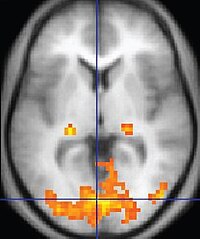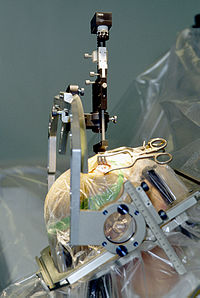
Measurements and morphometric landmarks of the human spinal cord: A cadaveric study
Sign Up to like & getrecommendations! Published in 2023 at "Clinical Anatomy"
DOI: 10.1002/ca.24010
Abstract: The topographical neuroanatomy of the human spinal cord (SC) is currently based on the adjacent vertebrae. This morphometric study sought to develop a dataset allowing for statistical analysis of human SC segment characteristics. Overall, 32… read more here.
Keywords: measurements morphometric; human spinal; widths thicknesses; spinal cord ... See more keywords

Automated slice‐specific z‐shimming for functional magnetic resonance imaging of the human spinal cord
Sign Up to like & getrecommendations! Published in 2022 at "Human Brain Mapping"
DOI: 10.1002/hbm.26018
Abstract: Functional magnetic resonance imaging (fMRI) of the human spinal cord faces many challenges, such as signal loss due to local magnetic field inhomogeneities. This issue can be addressed with slice‐specific z‐shimming, which compensates for the… read more here.
Keywords: magnetic resonance; resonance imaging; slice specific; human spinal ... See more keywords

Investigating the human spinal sensorimotor pathways through functional magnetic resonance imaging
Sign Up to like & getrecommendations! Published in 2021 at "NeuroImage"
DOI: 10.1016/j.neuroimage.2021.118684
Abstract: Most of our knowledge about the human spinal ascending (sensory) and descending (motor) pathways comes from non-invasive electrophysiological investigations. However, recent methodological advances in acquisition and analyses of functional magnetic resonance imaging (fMRI) data from… read more here.
Keywords: resonance imaging; magnetic resonance; spinal fmri; human spinal ... See more keywords

Non-invasive recording of high-frequency signals from the human spinal cord
Sign Up to like & getrecommendations! Published in 2022 at "NeuroImage"
DOI: 10.1016/j.neuroimage.2022.119050
Abstract: Throughout the somatosensory system, neuronal ensembles generate high-frequency signals in the range of several hundred Hertz in response to sensory input. High-frequency signals have been related to neuronal spiking, and could thus help clarify the… read more here.
Keywords: human spinal; high frequency; spinal cord; frequency signals ... See more keywords

Production of human spinal-cord organoids recapitulating neural-tube morphogenesis.
Sign Up to like & getrecommendations! Published in 2022 at "Nature biomedical engineering"
DOI: 10.1038/s41551-022-00868-4
Abstract: Human spinal-cord-like tissues induced from human pluripotent stem cells are typically insufficiently mature and do not mimic the morphological features of neurulation. Here, we report a three-dimensional culture system and protocol for the production of… read more here.
Keywords: human spinal; cord; morphogenesis; spinal cord ... See more keywords

Acute and non-resolving inflammation associate with oxidative injury after human spinal cord injury
Sign Up to like & getrecommendations! Published in 2021 at "Brain"
DOI: 10.1093/brain/awaa360
Abstract: In spinal cord injury, the initial mechanical insult may be followed by progressive cord atrophy and neurodegeneration. Zrzavy et al. characterize innate and adaptive inflammatory responses in human spinal cord injury, and show that oxidative… read more here.
Keywords: cord; oxidative injury; human spinal; injury ... See more keywords

Historical development and contemporary use of neuromodulation in human spinal cord injury
Sign Up to like & getrecommendations! Published in 2022 at "Current Opinion in Neurology"
DOI: 10.1097/wco.0000000000001080
Abstract: Purpose of review There is a long history of neuromodulation of the spinal cord after injury in humans with recent momentum of studies showing evidence for therapeutic potential. Nonrandomized, mechanistic, hypothesis-driven, small cohort, epidural stimulation… read more here.
Keywords: neuromodulation; human spinal; cord injury; spinal cord ... See more keywords

Constructing 2D maps of human spinal cord activity and isolating the functional midline with high-density microelectrode arrays
Sign Up to like & getrecommendations! Published in 2022 at "Science Translational Medicine"
DOI: 10.1126/scitranslmed.abq4744
Abstract: Intraoperative neuromonitoring (IONM) is a widely used practice in spine surgery for early detection and minimization of neurological injury. IONM is most commonly conducted by indirectly recording motor and somatosensory evoked potentials from either muscles… read more here.
Keywords: cord; ionm; human spinal; spinal cord ... See more keywords

Expression of L1 Cell Adhesion Molecule (L1CAM) in extracellular vesicles in the human spinal cord during development.
Sign Up to like & getrecommendations! Published in 2022 at "European review for medical and pharmacological sciences"
DOI: 10.26355/eurrev_202209_29651
Abstract: OBJECTIVE L1 cell adhesion molecule (L1CAM) is a glycoprotein characterized by three components: an extracellular region, a transmembrane segment, and a cytoplasmic tail. L1CAM is expressed in multiple human cells, including neurons. The neural cell… read more here.
Keywords: cord; l1cam; human spinal; adhesion molecule ... See more keywords

Bioengineering the human spinal cord
Sign Up to like & getrecommendations! Published in 2022 at "Frontiers in Cell and Developmental Biology"
DOI: 10.3389/fcell.2022.942742
Abstract: Three dimensional, self-assembled organoids that recapitulate key developmental and organizational events during embryogenesis have proven transformative for the study of human central nervous system (CNS) development, evolution, and disease pathology. Brain organoids have predominated the… read more here.
Keywords: biology; human spinal; pathology; spinal cord ... See more keywords

Remodeling Brain Activity by Repetitive Cervicothoracic Transspinal Stimulation after Human Spinal Cord Injury
Sign Up to like & getrecommendations! Published in 2017 at "Frontiers in Neurology"
DOI: 10.3389/fneur.2017.00050
Abstract: Interventions that can produce targeted brain plasticity after human spinal cord injury (SCI) are needed for restoration of impaired movement in these patients. In this study, we tested the effects of repetitive cervicothoracic transspinal stimulation… read more here.
Keywords: cervicothoracic transspinal; stimulation; repetitive cervicothoracic; human spinal ... See more keywords